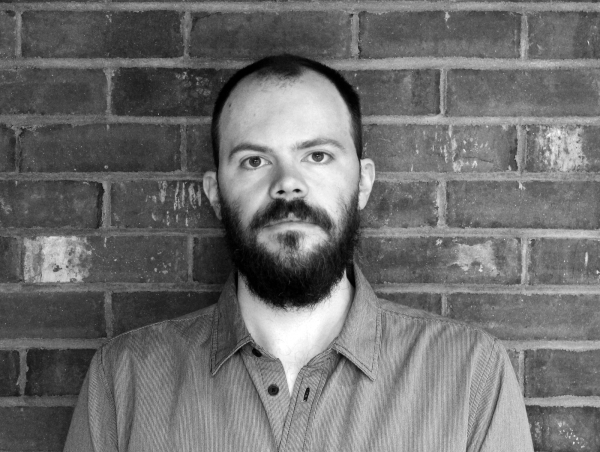You have /5 articles left.
Sign up for a free account or log in.

A rising number of academics have flocked to Substack.
David Ho/Inside Higher Ed
Erik Hoel is familiar with the changing media landscape—his mother’s bookstore in Newburyport, Mass., nearly faced bankruptcy during the COVID-19 pandemic before a GoFundMe saved the store.
Its near closure caused Hoel to reassess the way information is delivered.
“I realized people would wake up, check their phones and, yes, read an email or watch a TikTok video, but they would also read an essay if you get them at the right time,” he said, which he added was “unimaginatively powerful.”

Erik Hoel
Hoel launched a newsletter in May 2021 through the service Substack, which allows users to monetize their newsletter while offering audio and video components. Less than two years later, Hoel left his position as a biology research professor at Tufts University to focus on his Substack full-time.
“I don’t view it as leaving behind research,” Hoel said. “I view it as doing something else for a little while but with some opportunities to do the same type of researching and thinking.”
Hoel said in his six months of working on his Substack full-time, it has replaced 80 percent of his Tufts salary. He acknowledged the move would sound “a bit extreme” to the average person.
While not every professor leaves their job for a newsletter, a growing number of academics are turning toward the service, according to Substack. From July 1, 2022, to July 1, 2023, the site saw a 107 percent jump in academic publishing, representing “thousands” of new publications, the company said. There also was a 42 percent increase in academic paid subscriptions.
The increase of academics on the site is at a “tipping point,” said Clyde Rathbone, partnerships manager at Substack.
What Is Substack?
Substack launched in 2017, providing an infrastructure for users to publish newsletters. It later added audio and video abilities in 2021 and 2022, respectively. The site has garnered more than two million paid subscribers since its launch, according to Rathbone.
Writers can either publish their work for free to a general audience or opt in to a subscription model that charges readers a minimum of $5 per month. Substack takes 10 percent of the earnings, with the writer retaining the remaining 90 percent.
One of the selling points, according to both Substack officials and Substack users, is the ability for users to take their list of email subscribers with them once they’re done with the site.
Michael Beam, director of emerging media and technology at Kent State, attributes at least part of the rise of Substack to a growing media shift. First, there were the email lists of the 1990s, followed by blogs in the early ’00s, which were disrupted by the rise of social media sites. Then, 2020 and 2021 brought a flurry of new podcasts—and now the popularity torch appears to be passed to newsletters.
“For a long time in the blogosphere world, it was a place for dialogue. With Twitter, it was public dialogue,” Beam said. “I wouldn’t call Substack and [blogging host site] Medium as the central place for it now, but I don’t know if there is a central place.”
Popularity Rising Amid Social Media Shifts
The allure of Substack is different depending on which academic you ask. Brian Klaas, an associate professor of global politics at University College London, sought a medium to share his articles and thoughts in a deeper way than the experience on typical social media sites like Twitter.
“Where do you put something that’s not a journal article and hasn’t been rigorously researched for two years, but you think it’s important to get in a public space?” Klaas said. He has also worked as a contributor at The Washington Post and The Atlantic, but he said Substack allows him more freedom.
“It lets me play with ideas, float sparks of future academic work, but also ideas I have about the world that don’t fit in a piece for a publication.”
He has roughly 15,000 subscribers on Substack six months after launching his newsletter.
It felt like everyone I know is trying to do science in the same way—someone has to do it differently, and why not me?
—Adam Mastroianni
Katelyn Jetelina started her newsletter after her popular Facebook page was hacked.
“It was a hard lesson to learn that we rent space from social media; we do not own it,” said Jetelina, who is an adjunct professor at the University of Texas School of Public Health.
She found Substack while looking for a more solid home for her content that was still accessible to the general public. She said the experience has made her a better scientific communicator.
“Those shouldn’t be separate—scientists should be able to communicate their findings well, but that’s not training scientists get,” she said. “I’ve learned through trial and error and think it’s a very important skill.”
Adam Mastroianni is also using the space to bring a wider audience to the science field, beyond what he said is a very small number of people who read scientific journals.
“It felt like everyone I know is trying to do science in the same way—someone has to do it differently, and why not me?” he said. He said he published a full paper in November on his Substack and now “can’t go back.”
“Instead of putting scholarship in a journal with its restrictions to meet, why not develop ideas in public—which means they’ll develop differently,” he said. While he is keeping his teaching position, he does not see his Substack as a complement. “This is the thing I believe in.”
Emily Oster, who has about 10,000 paid subscribers, said that without her newsletter, her newest book focused on navigating pregnancy after prior complications would not exist.
“People would always tell me, ‘I have pre-eclampsia, I had a miscarriage’ and ask questions—this is a response to that,” said Oster, a tenured professor of economics at Brown University. “There’s no way I would’ve written it if I hadn’t spent so much time hearing from people on this avenue.”
Most of those interviewed acknowledged that running a newsletter is not for all academics—it’s time-consuming and, more often than not, is not lucrative enough to replace a full-time job.
But some, including Klaas, are using it as a tool to bolster their own research through collaborations and future grant proposals.
“It’s the thing that encourages collaboration and it allows you to test ideas,” he said. “Even if the grant organizations don’t look favorably on Substack, I’m planning to apply for grants that I’ve written [Substacks] about.”
The site’s popularity could wane in the coming years, but what medium to watch next is anyone’s guess, according to Beam of Kent State.
“It won’t be the next big product; it’ll be who gets everyone to sign up,” he said. “We don’t end up where it’s the best practices or user interface. We end up where everyone else is.”





